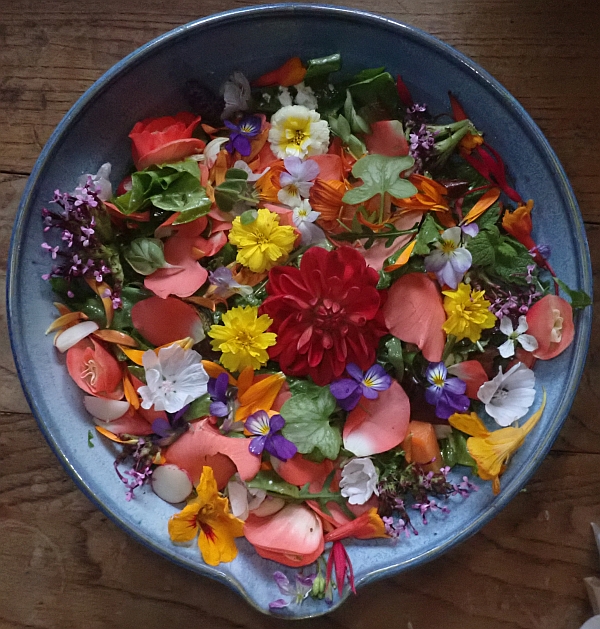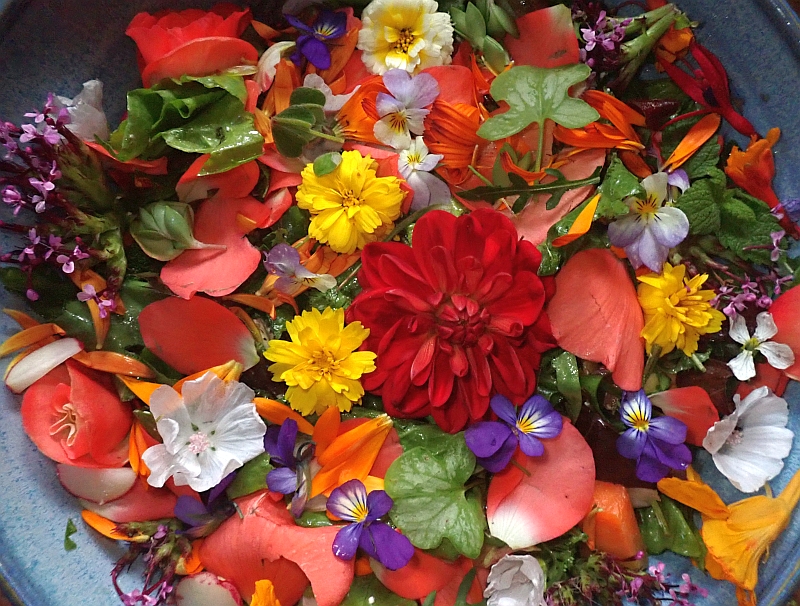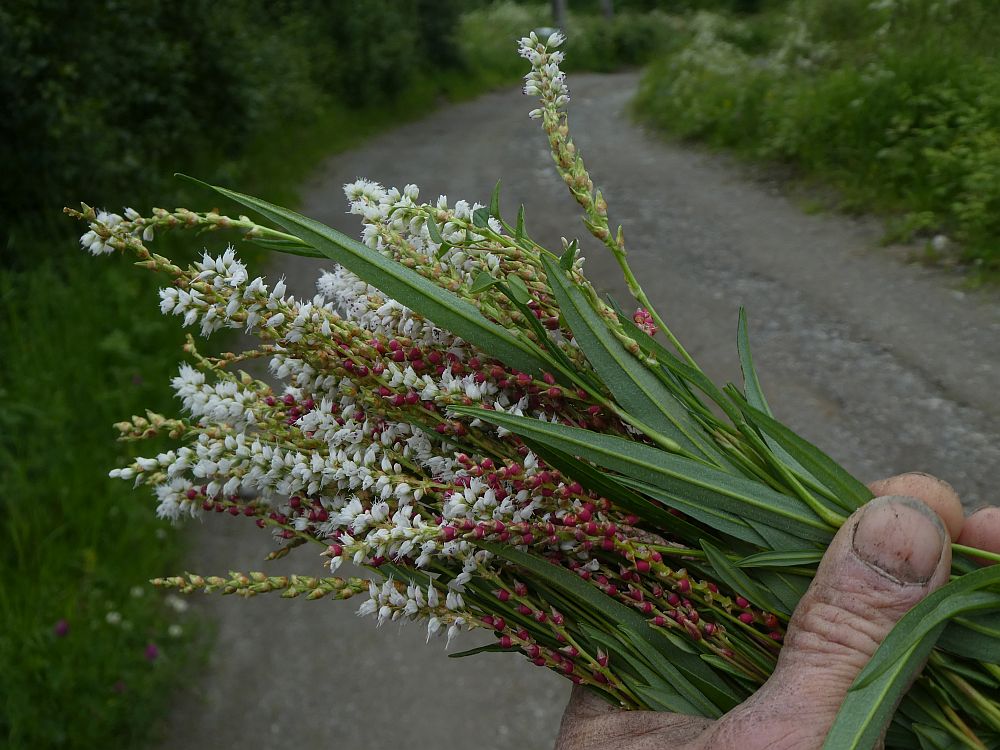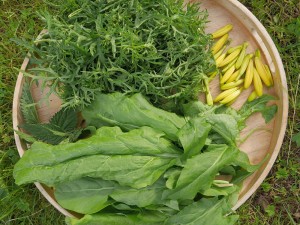



Mallows (Malva spp.) are now in season for harvesting and will from now until autumn be an important source of greens and edible flowers. The best part are the flower buds with surrounding leaves. We started earlier in the week with musk mallow / moskuskattost (Malva moschata), a reliable perennial here that also self-sows in just about the right quantity. Traditionally, Malvas were often used in soups, so it was a good addition to pea soup along with
Hybrid onions (Allium senescens x)
Rumex acetosa (mixed Russian cultivars); sorrel / engsyre
Campanula trachelium tops (nettle leaved bellflower / nesleklokke)
Myrrhis odorata unripe seed pods (sweet cicely / spansk kjørvel)
Origanum vulgare (oregano / bergmynte)



It is often planted in gardens as it flowers for a long time in summer. It has naturalised in the UK (see https://www.brc.ac.uk/plantatlas/plant/malva-alcea) and also here in Norway there are a number of observations, particularly around Oslo.
This summer, I’ve been using this mallow much more than before as I now have a lot of it and it has replaced moschata in a few places, suggesting that these may be hybrids! This really is one of the most useful perennial vegetables in the summer garden. Along with other mallows you can pick off leaves, young flower buds and flowers over an extended period! I use them in various stir-fry dishes, in soups, on pizza, in quiches and mixed salads!
It is surprisingly not often mentioned as edible in ethnobotanical studies (maybe underreported due to confusion with moschata?). However, a quick search revealed it being used traditionally in Czechoslovakia and Bulgaria!
If I had written my book today, this may well have replaced moschata. I did mention alcea in the book under the account of moschata as follows:
I have less experience with Malva alcea, greater musk mallow, which is, as the English name suggests, a larger plant. It has a similar range to musk mallow, except that it isn’t found in the UK. I’ve only grown the form ‘Fastigiata’ which is long-lived and a nice ornamental, needing staking up during the summer. My plant was sterile and is
thought possibly to be a hybrid between M. alcea and M. moschata. The flowers are also good in salads.
Bees love it too!
Here are a few pictures of it in the garden today:

It’s a rare event that I forage outside the garden at this time of year and almost never for leafy greens. I’m trying to find time at least once a week for a walk in the woods and at the weekend I did just that and I was surprised to find that the alpine bistort (viviparous knotweed / harerug) bulbils were ready to harvest. It often grows in large quantities along tracks in sunny spots on the edge of the forest.


We had a perennial veggie quiche for dinner and these were used as as a tasty nutty topping. The vegetables we used included sorrel (Rumex acetosa / engsyre), musk mallow (Malva moschata / moskuskattost), day lily flowers (Hemerocallis / daglilje), various onions (løk), Hablitzia leaves and Hosta.


